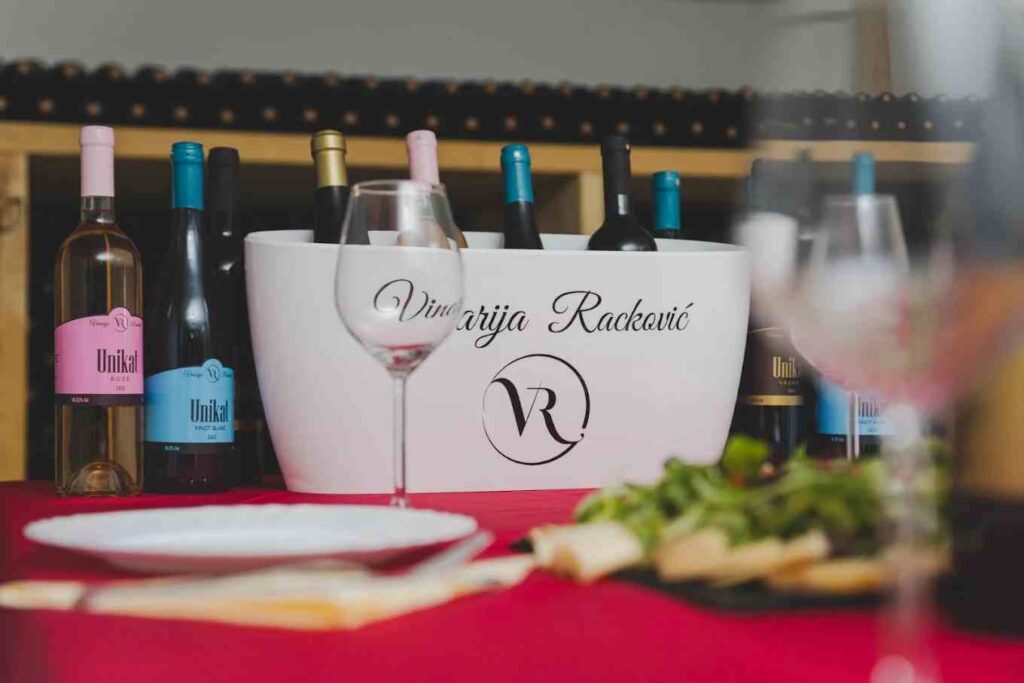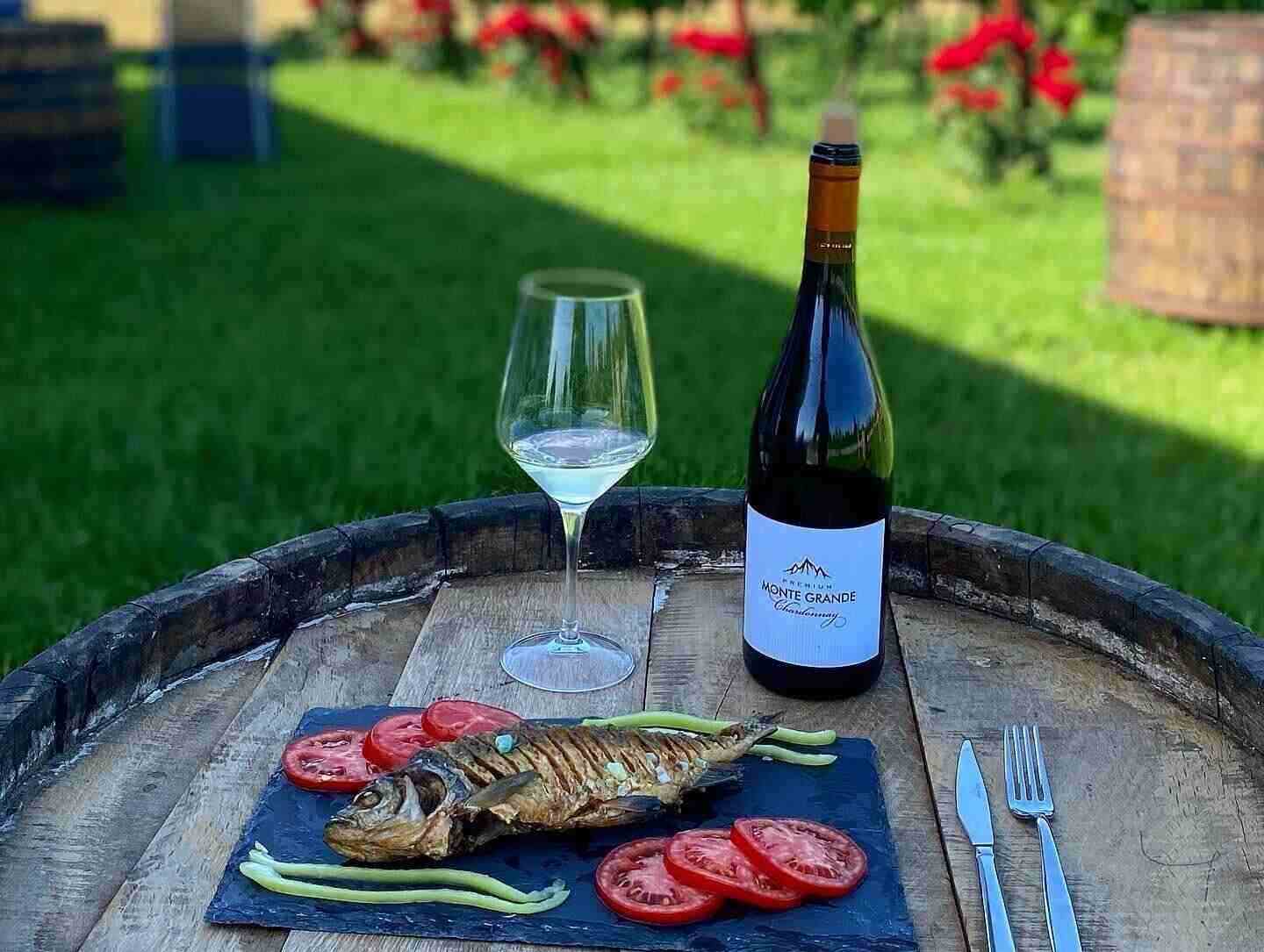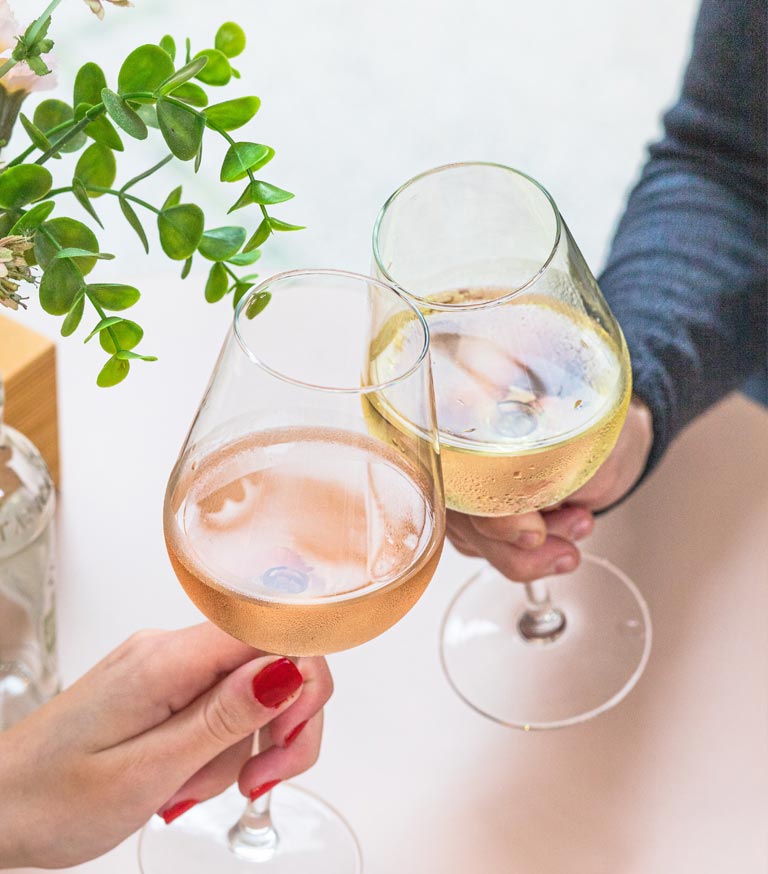Properly served wine enhances aroma, flavour, and the overall experience. The way we serve wine can significantly influence how it’s perceived, how it tastes, and how much it is enjoyed.
Proper service isn’t reserved only for restaurants or wine cellars. Whether you’re pouring wine for guests at home or offering it to tourists during a tasting, following the basic rules can make the difference between an average and an exceptional experience.
In Montenegro, a country with a growing wine scene and native varieties like Vranac and Kratošija, knowing how to serve wine is not just about table manners. It’s about showing respect for wine as a part of heritage.
Ideal wine serving temperature
The temperature of wine is one of the most important factors affecting its aroma, structure, and flavour. Wine that is too cold can lock in aromas, while wine that is too warm can feel heavy and overly alcoholic. Each type of wine requires a carefully adjusted serving temperature.
- Sparkling wines – the best served well chilled at 6 to 8 degrees Celsius to preserve freshness and bubbles.
- White wines should be served when their temperature is between 8 and 12 degrees Celsius, depending on the style (younger wines on the lower end, more complex ones slightly warmer).
- Rosé wines show their fruitiness and freshness best when served at 8 to 10 degrees Celsius.
- Lighter red wines should be served at 14 to 16 degrees to maintain freshness and soft tannins.
- Aged red wines require a serving temperature of 16 to 18 degrees to fully express their aromas and structure.
If you’re unsure about the exact temperature, it’s better to serve the wine slightly chilled.
Choosing the right wine glass
The right glass isn’t just about the look. It has a direct impact on how the wine behaves in the glass. The shape, thickness, and width of the opening influence how the wine develops, how the aromas reach the nose, and how the texture is perceived on the palate.
That’s why selecting the proper glass is an important step in wine service, especially when it comes to character-driven wines like those from Montenegrin wineries.
Red wines
For varieties like Vranac or Cabernet Sauvignon, large, wide glasses with an open rim are recommended. This shape allows the wine to breathe, softens the tannins, and releases complex aromas such as spice, leather, and ripe dark fruit. The wide bowl also increases contact with oxygen, which is especially important for aged wines.
White wines
Wines like Krstač or Malvazija are best served in smaller, narrower glasses that preserve a cool temperature and direct fresh fruity and floral aromas straight to the nose. This shape also protects the delicacy of white wines, especially in young and aromatic expressions.
Rosé wines
Rosé is best served in medium-wide glasses, often with a slightly tapered rim. This balance allows both freshness and fruitiness to shine through. This is particularly important for rosés made from Montenegrin Vranac, which have body but remain easy to drink.
Sparkling wines
For sparkling wines, the key is preserving the bubbles, or effervescence, which is best achieved with tall, narrow glasses known as flutes. These glasses direct the aroma and help retain CO₂ for longer. Alternatively, for more complex sparkling wines, a wider tulip-shaped glass can also be used.
Glass material and design
Wine quality truly stands out only when nothing interferes with it, visually or thermally. That’s why the material and shape of the wine glass are just as important as its volume.
The glass should be thin, clear, and neutral – free of colour, engravings, or decorations. Only then can you properly assess the wine’s colour, clarity and viscosity, which are all essential elements of sensory evaluation.
Crystal and decorative glasses may be beautiful, but they distract from the wine and compromise presentation. In professional and educational settings, a simple, classic design is preferred.
A long-stemmed glass isn’t just about elegance; it’s also about preventing the wine from getting warm and maintaining the optimal temperature.
How to properly hold a wine glass
The way we hold a wine glass affects not only the aesthetics of serving but also the maintenance of the wine’s temperature. It’s best to hold the glass by the stem rather than the bowl to prevent warming the wine with your hand and to avoid fingerprints that can interfere with the visual experience.
Properly holding the wine glass adds a sense of control and elegance, especially during tastings, formal service or wine presentations.

Proper wine presentation
In hospitality settings, wine tours, informal and more formal events, the way wine is presented plays an important role. The bottle is brought unopened, with the label facing the guest. The sommelier or host states the basic details: the name of the wine, grape variety, vintage, region and winery.
Next comes the opening of the bottle, and a small amount is poured for the guest who ordered it to confirm the wine is in good condition, not corked or oxidised.
For older red wines, it is recommended to serve from a wine basket to avoid disturbing the sediment. White and sparkling wines should be kept in an ice bucket, and ideally, the temperature is monitored throughout the service.
Proper wine pouring
Like every other aspect of wine culture, pouring wine follows certain rules that enhance the overall impression and show respect toward both the guest and the wine being served. Wine is poured from the guest’s right side, into a glass that remains still and is not lifted during pouring.
The bottle label should be visible and facing the guest. While pouring, the neck of the bottle should not touch the glass, and the wine should flow freely and quietly. The amount poured depends on the type of wine:
- Red wines: up to one-third of the glass, leaving room for the aromas to develop
- White and rosé wines: up to half the glass, to preserve freshness
- Sparkling wines: up to three-quarters of the glass, allowing the bubbles to shine
Wine should not be refilled without first asking, especially in formal settings, tastings or when multiple wines are being served during the evening.
When and why to decant wine
Decanting is the process of pouring wine from the bottle into a glass vessel, with the goal of enhancing its presentation and development. It is used in two key situations:
- For older wines, to gently separate the sediment that naturally forms during long aging
- For younger, more powerful wines, to allow the wine to breathe, soften, and reveal its full aromatic profile through contact with air
Tannin-rich wines like Montenegrin Vranac often benefit from being decanted for 20 to 30 minutes before serving. During this time, the wine becomes more expressive, rounder and more enjoyable to drink. Decanting doesn’t change the essence of the wine, but allows it to show its full potential, just as the winemaker intended.
Serving wine in different contexts
The basic rules of wine service remain the same, but their application adjusts to the setting. Whether it’s a dinner at home, a restaurant, or a wine tour.
Serving wine at home
In an informal setting, it’s important to
- Respect the proper serving temperature
- Use clean and appropriate glassware
This approach adds value even to the simplest gatherings.
Serving wine in a restaurant
Wine is served according to the standard protocol
- Presenting the bottle and stating key information
- Offering a taste before pouring
- Pairing the wine with food and following the proper serving order
Professionalism and staff knowledge are key to leaving a good impression.
Serving wine on wine tours
During tastings in Montenegro, wine is served
- At the ideal temperature
- With explanations about the grape variety and origin
- Accompanied by authentic local bites
The service is carefully designed so that you don’t just taste the wine, you experience it.
If you’d like to learn more through hands-on practice about proper wine service and Montenegrin wine culture, we recommend an educational experience like Keković Wine School, where tradition, knowledge, and enjoyment come together.
Respecting wine is respecting tradition
Every bottle of Montenegrin wine carries a story of the land, the sun, the vineyard, the people who nurture it, and the year it remembers. Proper service brings those stories to life.
You don’t need to be a sommelier to serve wine the right way. All it takes is some basic knowledge, a bit of care, and the desire to elevate the wine experience. For more information about wines, education, and wine tours across Montenegro, visit our Wine of Montenegro contact page.
Join our newsletter for offers!
Sign up now to receive the latest updates on promotions and coupons. Don’t worry, we won’t spam you!






